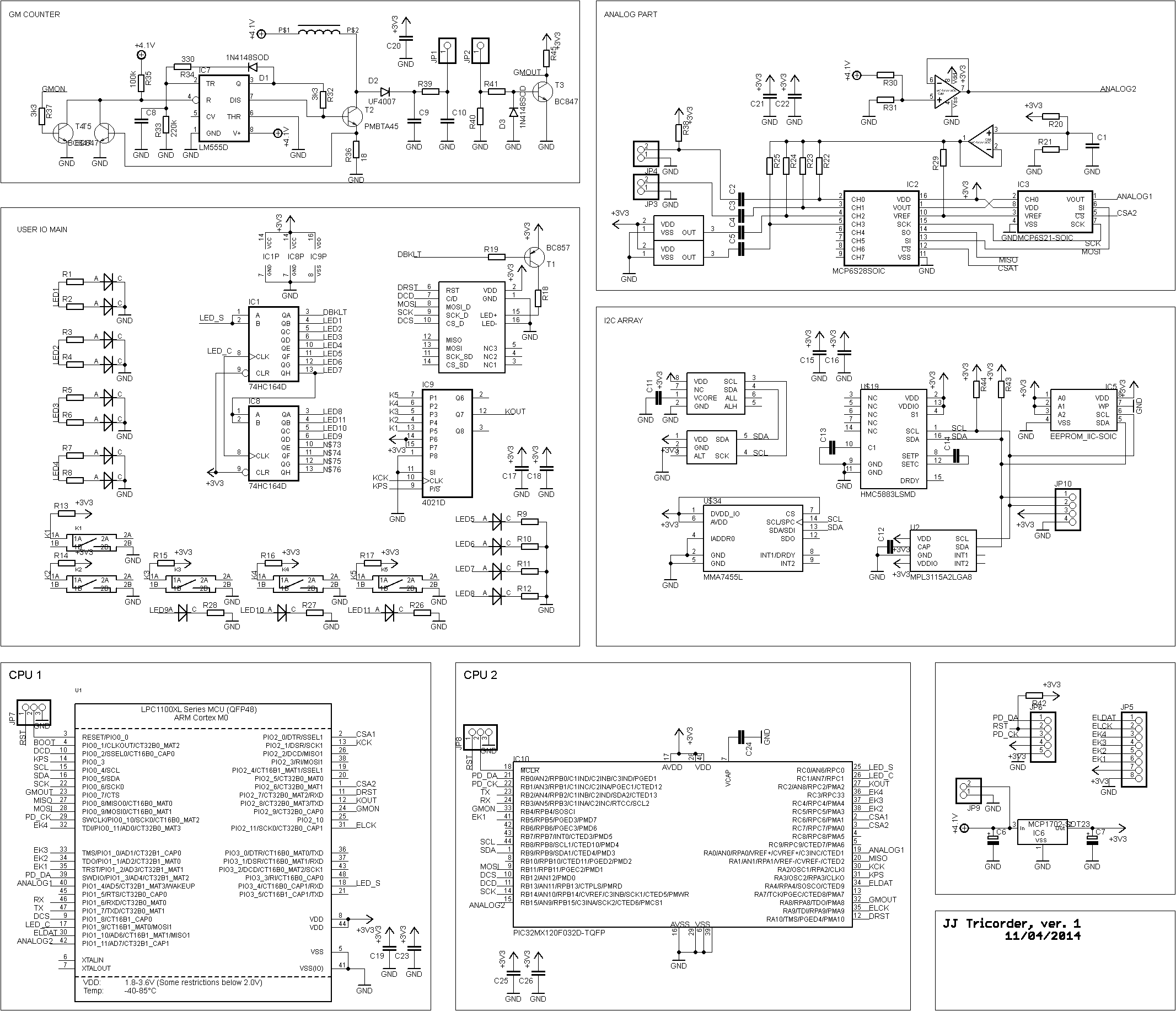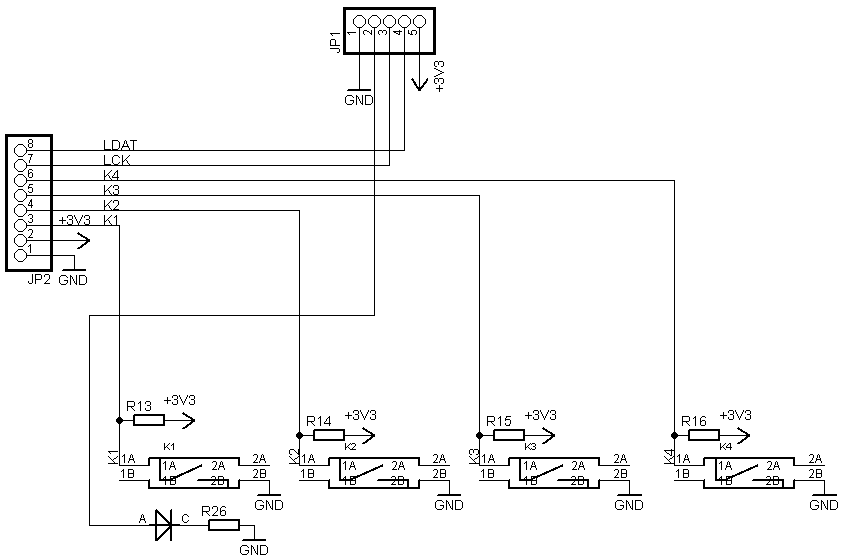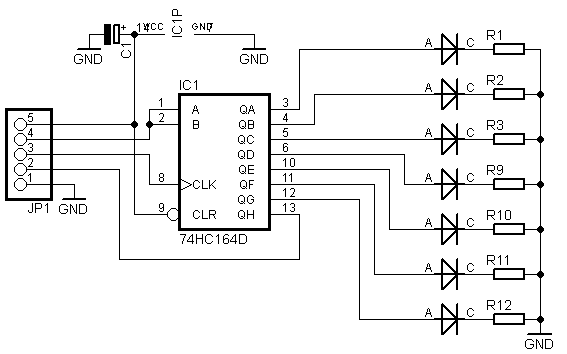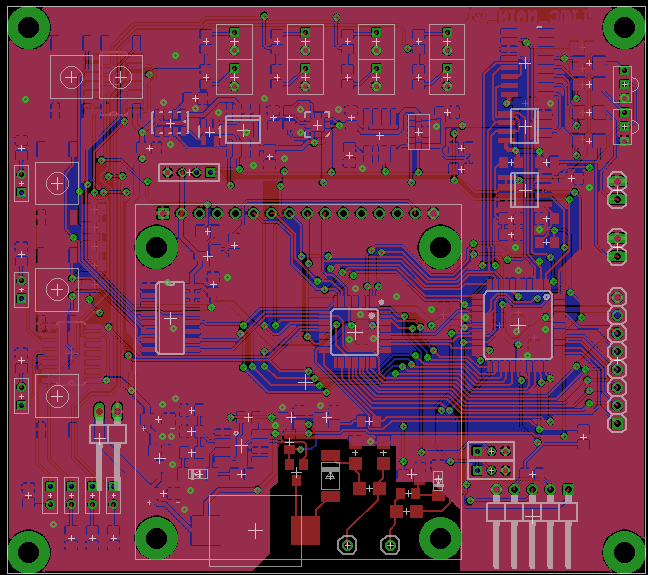MCU selection
As I mentioned before, we will need some MCU able to perform some FFT analysis. 128 or 256 point FFT should be enough. I did some tests and LPC1114 seems to perform well, able to do 256 point FFT in 5,5ms at 48MHz. Not bad.
I did some more experiments with PIC32 (namely PIC32MX150F128B) and was more happy about it, it performs the same task in 4,8ms - however at 12 times slower clock, 4MHz. As I have more experience with PIC32, I would use it too - and I was unsure which one to choose.
So I designed it as double core design.
Yes, there are two microcontrolelrs on board. Any maker can decide which one to use and software will be written in "multiplatform" way, where minor modification (some kind or #define or simply different makefile) will build binary for either MCU. A kind of low-level hardware abstraction will be needed, so higher-level software could use it with no regard to actual implementation in particular MCU. Actually, I can imagine any other MCU to be supported, considering enough horespower (seems like Cortex M0 at ~20-30MHz is minimum), ADC, SPI and I2C.
Circuit
Whole circuit is divided into three boards - main board and two user IO boards, to accomodate tricorder housing.
On main board is the core of tricorder - all sensors, MCU, power circuits and display.  In fact, there is no rocket science involved. Just a MCU, few buttons and LEDs with serial expanders, sensors in basic application circuit and common 1,8" SPI color LCD from Ebay. For analog sensors, I designed small cascaded PGA with MCP6Sxx. Those are nice little SPI controlled PGAs. Notice the Vdd/2 source (R20/R21) with opamp as follower, biasing the output of PGA into Vdd/2 level, needed for sampling of AC signal with MCU AD input. GM counter part consists of simple 400V power source (555 circuit and associated circuitry), along with amplifier to allow direct conenction to digital input of MCU.
In fact, there is no rocket science involved. Just a MCU, few buttons and LEDs with serial expanders, sensors in basic application circuit and common 1,8" SPI color LCD from Ebay. For analog sensors, I designed small cascaded PGA with MCP6Sxx. Those are nice little SPI controlled PGAs. Notice the Vdd/2 source (R20/R21) with opamp as follower, biasing the output of PGA into Vdd/2 level, needed for sampling of AC signal with MCU AD input. GM counter part consists of simple 400V power source (555 circuit and associated circuitry), along with amplifier to allow direct conenction to digital input of MCU.
"No magic here" goes for first UI board too
 and second UI board - just IO for buttons and LEDs.
and second UI board - just IO for buttons and LEDs.

Obviously, the most of the work will be done on software.
PCB
PCBs are designed in free version of Cadsoft Eagle.

By the way, all other tools used to design JJTC are either free as free beer or even free as freedom. Main development is done on Linux PCs, so all the software has to run on LInux OS.
Project design files are hosted at github
 jaromir.sukuba
jaromir.sukuba
Discussions
Become a Hackaday.io Member
Create an account to leave a comment. Already have an account? Log In.